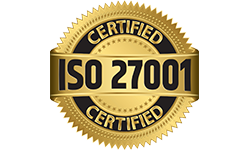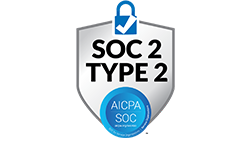
Cell and gene therapy has garnered a lot of interest due to its potential to treat Cancer. Apart from cancer, it has the potential to treat other diseases caused due to genetic disorders. Genetic diseases are where the main piece of or an entire section of DNA is deleted or duplicated. Such changes are known as genetic mutations and can also be passed on to future generations.
Being a part of the biomedical research field, cell and gene therapy targets to treat, cure, as well as prevent genetic and acquired disease. But both these works differently. In Cell therapy, cells are modified or altered outside the body and then injected into the patient’s body. In the case of gene therapy, new genes are introduced, or existing defective genes are replaced or inactivated within the cell. This therapy is done within the body or at times outside of the body.

Cell and gene therapy are been tested under clinical trials. Scientists are exploring the different aspects of the therapy, its efficiency, and the risk involved. A very small number of such trials have been approved. FDA approved the first cell and gene therapy product, which is by Kymriah (Novartis). The others include Yescarta (Gilead) and Zynteglo (Bluebird). Tecartus has been the latest therapy approved and can be used in the U.S.
The FDA believes that the gene therapy application will be doubled each year and as per the reports by 2025, the United States will approve 10 to 20 therapies every year. Cell and gene therapy is all set to revolutionize the healthcare system. We have seen large companies investing in the same.
From the lab to the Masses
These therapies are extremely expensive due to their labor-intensive manufacturing process and it is marred with challenges when it comes to commercialization. For the commercialization of cell and gene therapy, we need to consider regulatory guidelines, manufacturing, patient education, logistics, and more. Hence companies are looking to develop a safe manufacturing process, at the correct scale and affordable cost. In the case of this therapy “one size doesn’t fit all” unlike other therapies and products. They are complex that can be manufactured in various ways that use different vectors and cell lines.
Gene therapy Manufacturing
Gene and cell therapy manufacturing is a crucial aspect when we speak about the commercialization of the therapy. The viral vector capacity of manufacturing is 1 – 2 orders which is much lower than the requirements. The Covid-19 has dealt another blow to manufacturing as viral vectors are used for vaccine development programs as well. We would need to evaluate the current manufacturing process to revolutionize cell and gene therapy and make it commercially viable and available.
Evaluation of Manufacturing Process
Scalability
The manufacturing process needs raw materials, cell substrates, and process consumables. The amount of time required to source such material for manufacturing is crucial. As the product progresses through clinical trials and gradually to commercialization, the requirement for treatment increases. Hence forecasting the manufacturing scale is important during the process development stage.
Manufacturing options – in-house or outsourced
The manufacturing process depends on important factors like the cost involved, the skill requirement, and the time needed. Depending upon the above the companies need to decide if they want to manufacture using in-house facilities or outsourced. The capital needed to set up the manufacturing unit is huge. The skilled resources are presently few. Hence depending upon the scalability and to reduce cost, it will be viable to outsource the process.
Sterilized Manufacturing
The present sterile filtration methods are inadequate for gene therapy. The level of risk is greater for modified gene cell therapies so the pharma companies must check the aseptic control while producing viral vectors. A shift to automated processes to reduce operator handling will reduce the risk of contamination.
Reconsidering the Regulatory Framework
In the year 2020 FDA had stopped few clinical trials due to the high usage of AAV vectors for treatments. This proved to be a setback for therapy manufacturing. FDA has appointed more reviewers and has amended the regulatory framework, but they expect more data from developers to understand the gene therapy characteristics. Reconsidering the regulatory framework especially for gene therapy will be a major boost for manufacturing.
Logistics
The therapy needs stringent temperature controls and product security during transportation. Since the treatments are personalized, the timelines are crucial – the collection from patient to the manufacturing location and back to patient needs to be complete in strict timelines. Hence right from the packing to the mode of transport to active shipment, live tracking plays a vital role. The logistics must be planned with an excellent level of expertise for the commercialization of cell and gene therapy manufacturing.
Conclusion
Cell and gene therapy will soon become a reality and will overcome the manufacturing challenges. The heavy influx of investments, clinical success, swift product approvals, focus on improving resources for the manufacturing process, and supply chain have all fueled to revolutionize cell and gene therapy manufacturing.
About Aventior
Data restructuring, CPV-AutoTM, Digital pathology, Data engineering, and Visualization are the services offered by Aventior to various pharma, life science, and biotech companies. They provide robust technical support using AI-backed technology. To know more about their services and the solutions they provide, do write to info@aventior.com.
Tell Us for more about your requirements here



